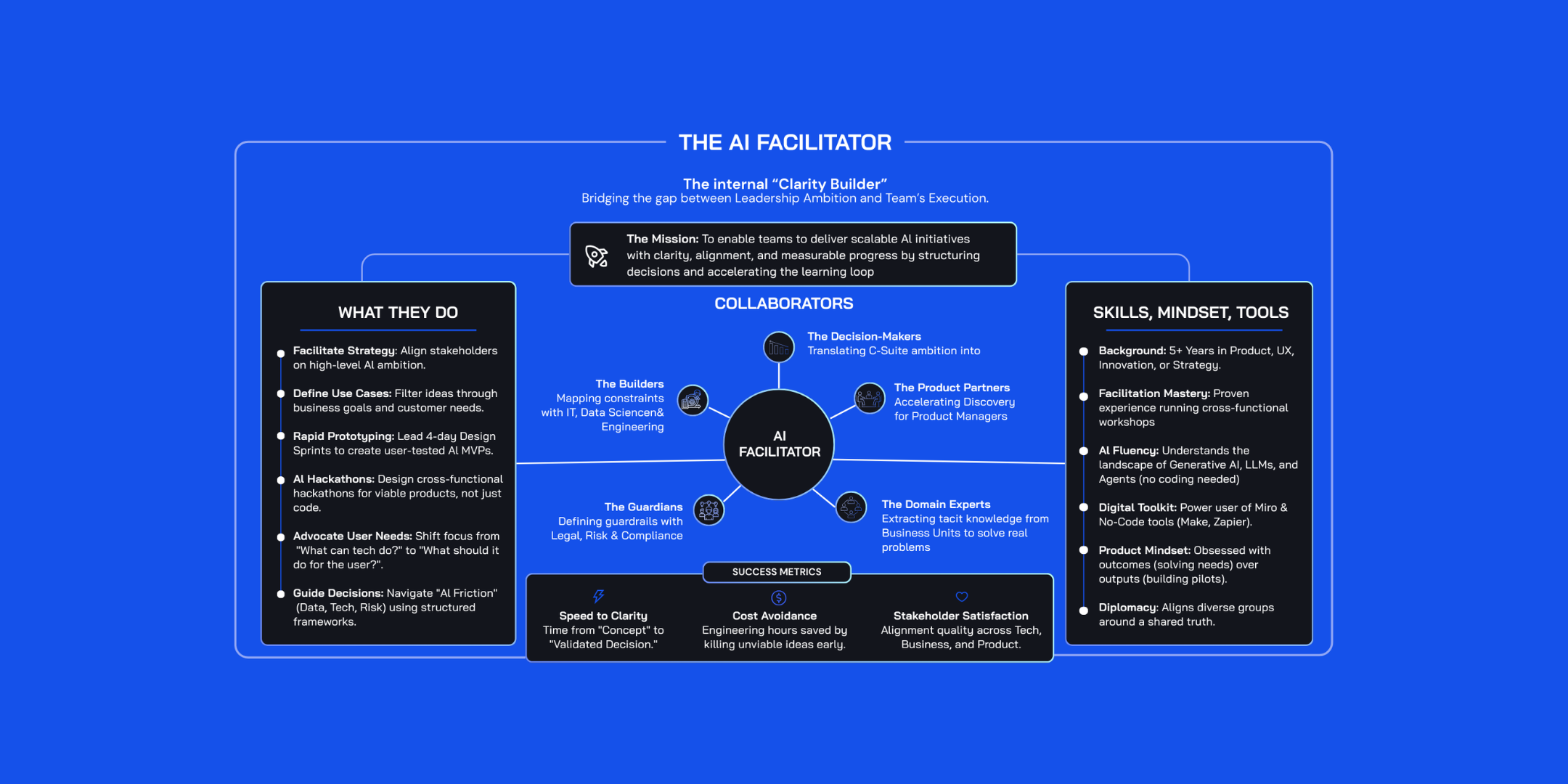Design Sprints in Saudi Arabia

As an Innovation Consultant & Facilitator based in Berlin, I’ve had the chance to travel to Riyadh, Saudi Arabia, and train different teams on the design sprint method. Each time, I found myself in a culture that, at first glance, seemed worlds apart from Europe. But as I spent more time, I discovered something surprising: Saudi Arabia’s deep-rooted values of community and collaboration resonate powerfully with the core principles of a design sprint.
What is a Design Sprint?
A design sprint is an intensive, four-day process designed to solve complex problems and fast-track innovation. Think of it as a structured creative burst, where collaboration and speed are key. At Design Sprint Academy, we’ve refined this format to ensure clarity and efficiency, guiding teams through a series of deliberate phases that push them toward solutions that matter.
The Four Phases of a Design Sprint
Day 1: Understand & Define:
We start by getting on the same page. The team needs to define the problem they’re solving and map out the challenge. It’s like laying the foundation of a house—everything that follows depends on getting this part right.
Day 2: Ideate & Decide
Creativity comes next. But instead of the usual group brainstorming, which often leads to groupthink, we operate on a principle called “Together Alone.” Each person generates solutions independently, bringing a fresh perspective to the table. Then we make decisions. Time is limited, and that’s by design. We need to choose the most promising solution.
Day 3: Prototype
This is when the team builds a quick, realistic prototype to bring the idea to life.
Day 4: Test with Users
No great idea survives first contact with reality unchanged. That’s why we spend the final day testing the prototype with real users. Feedback flows in, helping teams see what works, what doesn’t, and where they need to iterate.

The Five Principles of Design Sprints
1. Together Alone
Creativity doesn’t thrive in echo chambers. The best ideas come when people are free to think independently. That’s why, in a design sprint, we have participants generate ideas solo before coming together to share. It’s how you get genuine diversity of thought.
2. Strict Time Boundaries
Deadlines don’t just make us finish projects faster—they make us more decisive. A sprint forces us to make choices under pressure, cutting out the noise and focusing on what really matters.
3. Capture Everything
Documentation matters. Whether it’s a breakthrough idea or a tough decision, we capture every detail. It’s not about creating bureaucracy—it’s about keeping a clear record that informs the next steps and helps teams avoid retracing their steps.
4. Diverse Teams
Innovation thrives when diverse minds meet. The more varied the team—in expertise, gender, experience—the richer the solution. It’s not just about having different opinions; it’s about connecting those different perspectives to the final user, ensuring the solutions are empathetic and grounded in reality.
5. Direct Connection to the User
Nothing beats the feedback loop of real users. Testing prototypes gives teams rapid insights into what’s working and what’s not. It’s the key to staying agile and ensuring the final solution isn’t just innovative—it’s relevant.

The Saudi Arabian Context
You can’t understand why design sprints work so well in Saudi Arabia without looking at its history. For centuries, people lived in harsh desert conditions, where survival depended on collaboration and community. Families were close-knit, support systems were strong, and working together wasn’t just a choice—it was a necessity.
That’s a mindset that resonates with design sprints. At their core, sprints are about leveraging collective intelligence. Teams come together, pool their strengths, and solve problems fast. And this collaborative spirit is embedded in Saudi culture. But as with any new process, there are challenges worth paying attention to.
Challenges to Consider
Balancing Tradition and Innovation
In collectivist societies, tradition often holds significant weight. This can create friction when it comes to innovation, especially when challenging the status quo is seen as disruptive. In a design sprint, though, disruption is the fuel. Facilitators need to be mindful of creating a space where bold ideas can flourish without alienating participants who might feel uncomfortable challenging established norms.
The Pace of Change
Saudi Arabia’s Vision 2030 paints a bold picture of modernization, but change doesn’t happen overnight. Some organizations are more resistant to rapid change, preferring long-term stability. Design sprints, with their fast-paced, iterative nature, can feel jarring in environments that prioritize careful, long-term planning. The challenge is to introduce speed and experimentation in ways that complement, rather than clash with, these cultural preferences.
Diversity in Teams
Diversity brings richness to any team. And while Saudi Arabia has made significant progress in integrating women into the workforce, true gender diversity in teams can still be challenging to achieve. Facilitators need to be aware of the dynamics at play and ensure that the design sprint environment is inclusive, welcoming a variety of voices and perspectives.
Top-Down Innovation vs. Grassroots Collaboration
Many of Saudi Arabia’s most impressive innovations, like the futuristic project - Neom, are top-down initiatives. They showcase the country’s commitment to progress, but the challenge lies in cultivating the same spirit of innovation at the grassroots level. Design sprints thrive on cross-functional, grassroots collaboration. The key is to foster a culture where innovation isn’t just driven from the top, but also cultivated from within teams at every level.
The Path Forward
Design sprints have the potential to thrive in Saudi Arabia, but success lies in understanding the cultural context and navigating the challenges that come with it. By tailoring the sprint process to fit local norms, facilitators can unlock the full potential of Saudi teams—bringing innovation, collaboration, and creativity to the forefront of every challenge they face.



.jpg)





